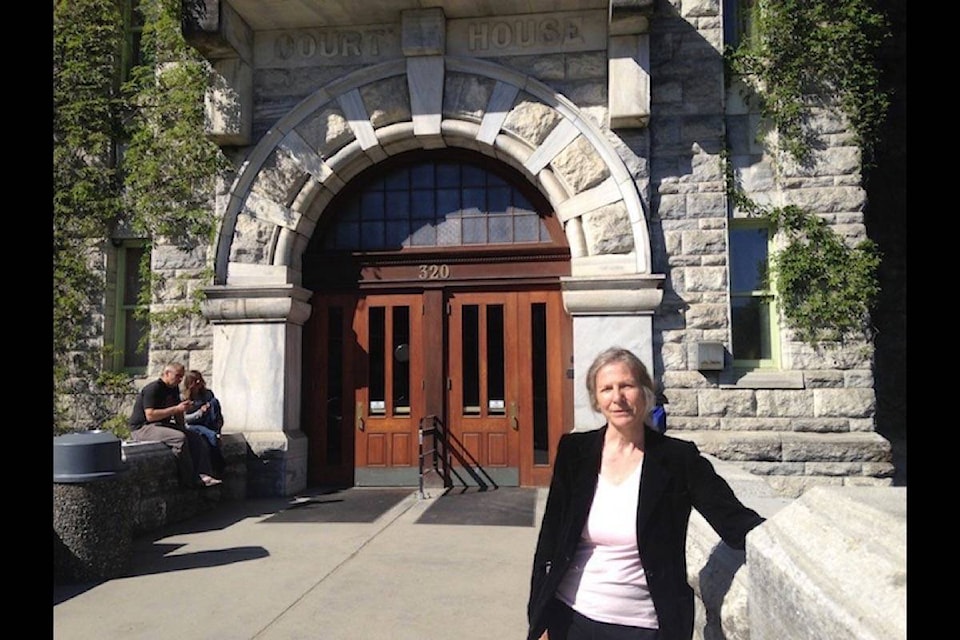We all owe late Slocan Valley environmental activist Marilyn Burgoon a debt of gratitude for insisting that justice be done when provincial authorities failed us.
Following the Lemon Creek fuel spill of 2013, the province opted not to lay charges despite an open-and-shut case: there was no dispute that a deleterious substance was deposited into the creek, nor that fish and other wildlife died as a result.
It was just a matter of who deserved the blame, because no one was willing to admit responsibility. Not the driver, nor the company he worked for, nor the provincial government that hired the company to deliver the fuel.
While we may have shaken our heads at the government’s blithe indifference, most of us figured nothing else could be done. Burgoon, however, had the gumption to take matters into her own hands and launch a private prosecution, despite the personal inconvenience and financial investment required.
The federal crown subsequently took over the case and won a conviction against the driver (who, ironically, Burgoon did not name in her action) while the province was acquitted and the company is still fighting the charges.
It’s very unfortunate that Burgoon didn’t live to see the final outcome of the case. At the rate it has been moving through the courts, the rest of us might not either.
DISINCORPORATING JUMBO: Now that the Jumbo Glacier Resort proposal is officially dead, the province is taking steps to disincorporate Jumbo Glacier resort municipality. Created in 2013, it will go down as the only B.C. municipality whose (human) population never rose above zero.
The last two times a B.C. municipality was disincorporated, it was also in our neck of the woods: Phoenix, high on a mountain between Grand Forks and Greenwood, was incorporated as a city in 1900 and went out of business in 1921 after the local copper mines shut down. Sandon, incorporated in 1898, and placed in receivership in 1913, was disincorporated in 1920.
Other municipalities ceased to exist as distinct entities when they amalgamated with neighbours including Columbia (with Grand Forks), Tadanac (with Trail), and Kinnaird (with Castlegar).
QUEST FOR A UNIVERSITY SITE: News that Quest University in Squamish has run into financial problems recalls that Nelson was once in the running to host the institution.
In 1998, former UBC president David Strangway, who spearheaded Quest’s creation, considered 15 B.C. communities before coming up with a shortlist of Nelson, Whistler and Squamish.
Talks with the City of Nelson went on for four months and Strangway visited here twice, lured by the vacant Tenth Street campus, from which Canadian International College had recently withdrawn.
Diehard Nelson university advocates notwithstanding, it was probably best for all involved that Strangway chose Squamish instead. The City of Nelson instead signed an agreement with Selkirk College for the campus, to great mutual benefit.
Quest finally opened in 2007 as a private liberal-arts university. It was recently granted creditor protection, forestalling receivership and providing it with a few months to find a way out a jam caused when a $23-million loan came due.
BALFOUR’S LONG RUN: The MV Balfour, due to be retired in 2022, is Kootenay Lake’s longest serving boat. Launched in 1954, its 66 years already exceed the venerable SS Moyie, which plied the lake for nearly 59 years between 1898 and 1957. The Moyie has now been a museum longer than it was in service.
Greg Nesteroff is the acting editor of the Nelson Star.
